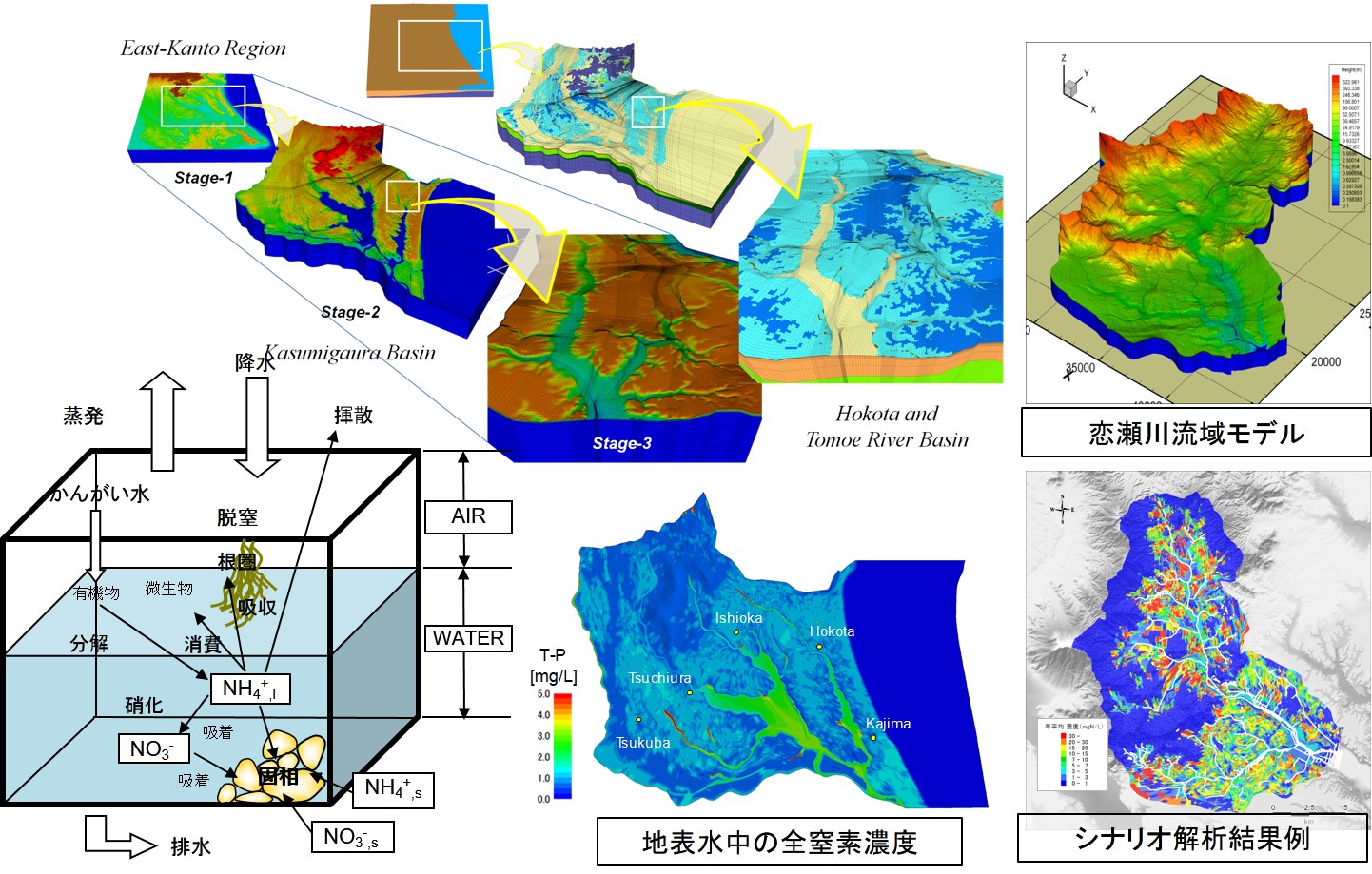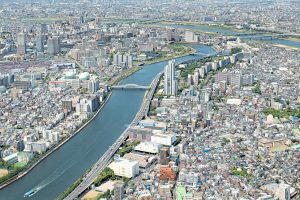Eutrophication measures in water systems
Overview
There are different types of pollution load in the basin, such as domestic wastewater in the urban area, wastewater from business establishments, fertilizer application to farmland and livestock manure. Depending on the source and pollutant type, the decomposition/reaction process, the entry route to the underground, and the movement mode afterwards vary.
In the integrated water circulation model, various pollutants from point sources and non-point source pollution are considered for river transport, ground intrusion, adsorption/desorption, advection/dispersion, while considering the dynamic changes of substances due to decomposition/chemical reactions. We offer a more natural physical model that incorporates, for example, mass transfer processes. This provides a clue to the detailed mechanism of the delay phenomenon and other mass transfer processes, which was difficult with the unit method of giving the pollutant load explicitly from the conventional macroscopic viewpoint.
- Tracking Nitrate Nitrogen Contamination, Common Dilute Solute Contamination
- Prediction of pollution load from rivers and groundwater to closed water areas
- Adsorption of landfall radioactive materials on land surface and tracking of attenuation process by water and sediment transport
Example
The figure below shows an example of analysis of nitrate nitrogen pollution. This is an estimation of the supply route to lakes and marshes based on an analysis in which the entire watershed and a detailed model of the polar regions are created in stages.





